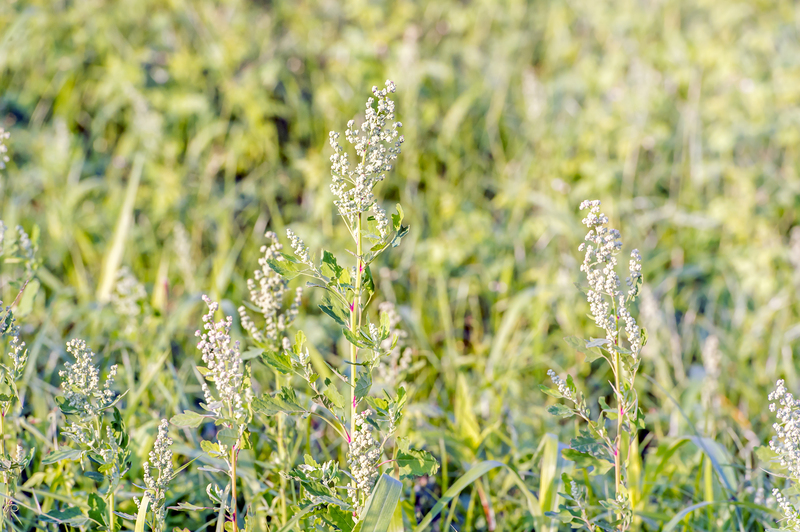Essential Equipment for Removing Tree Stumps Like a Pro
Are stubborn tree stumps ruining your landscape or delaying your next garden project? Removing tree stumps is a job that requires not just muscle, but also the right set of equipment. Whether you're a passionate DIYer or looking to launch a professional stump removal service, understanding the essential tools is the first step toward success. In this detailed guide, we'll walk you through everything you need to know about the best equipment for stump removal, how to use it, and special tips for safe, effective work.
Why Removing Tree Stumps Is Essential
Tree stumps left behind after tree felling don't just look unsightly--they can pose a variety of problems for both homeowners and property managers. Protruding stumps may house pests, promote fungal growth, or become tripping hazards. They can also complicate further landscaping and construction. By removing tree stumps professionally, you not only enhance the beauty of your yard but also protect your property and family.

Overview of Stump Removal Methods
There are several ways to tackle a tree stump--ranging from natural decay and chemical decomposition to professional mechanical removal. Each approach has its pros and cons, but when you're aiming for efficiency and a professional finish, mechanical methods prevail.
- Manual stump removal--Involves digging and chopping by hand; labor-intensive and best for small, rotting stumps.
- Chemical stump removal--Relies on chemicals to speed decomposition; slow and less eco-friendly.
- Burning--Requires permits; risky and not allowed in all areas.
- Mechanical stump removal--Uses specialized machines for quick, thorough results; ideal for most residential and commercial jobs.
In this article, we focus on the essential mechanical equipment for pro-level tree stump removal.
Must-Have Equipment for Removing Tree Stumps Like a Pro
1. Stump Grinder (Stump Grinding Machine)
Arguably the most essential and efficient machine for removing tree stumps fast is the stump grinder. These powerful tools use rotating blades or discs to chip away at the wood, grinding the stump below ground level.
- Walk-behind stump grinders: Great for residential use; manageable and relatively compact.
- Tow-behind or tracked stump grinders: Heavy-duty, ideal for commercial services and large-scale jobs.
- Key features to look for: Engine power, cutting wheel size, safety shields, adjustable height, and mobility.
Tip: Always rent or invest in a model that matches the size and hardness of the stumps you'll encounter.
2. Heavy-Duty Chainsaw
A chainsaw is indispensable for cutting large stumps down to ground level and removing any remaining roots or protruding branches. Choose a high-powered model suitable for hardwood and larger trunks.
- Gas-powered chainsaw: Powerful, portable, and long-lasting--suitable for most stump and root removal tasks.
- Electric and battery chainsaws: Lower maintenance but with limited runtime; best for light applications.
- Must-have accessories: Extra chains, fuel, chain oil, and a basic repair kit.
Proper chainsaw maintenance and operation are crucial to both performance and personal safety.
3. Mattock, Pickaxe, and Digging Bar
Hand tools like the mattock, pickaxe, and digging bar are essential for loosening soil, exposing roots, and prying troublesome sections outwards. They allow precision when you're tackling stubborn roots or working near structures.
- Mattock: Double-ended tool for chopping roots and breaking soil.
- Pickaxe: Ideal for working through rocky or compacted earth.
- Digging bar: Used to lever out heavy roots and chunks of stump.
These tools are invaluable for finishing off what machinery can't reach, ensuring complete root removal.
4. Shovel and Spade
A sturdy shovel and a sharp spade are necessary for clearing dirt around the stump, backfilling, and progressing your project. Choose models with reinforced steel blades and comfortable, ergonomic handles.
5. Axe or Hatchet
A sharp axe or heavy-duty hatchet makes quick work of stubborn, thick roots that need to be chopped by hand.
- Felling axe: For chopping larger roots and splitting thick pieces.
- Hatchet: Useful for precision chopping and light tasks.
Ensure your axe is regularly sharpened and well maintained for maximum safety and effectiveness.
6. Root Saw or Reciprocating Saw
Roots can extend surprisingly far and deep. A hand-held root saw or a reciprocating saw with a wood blade can reach and slice through awkward or lodged roots, particularly those underneath the main trunk.
7. High-Quality Safety Equipment
Working with powerful machinery around unpredictable timber--sometimes in rocky, uneven ground--means safety gear is non-negotiable. Professional stump removers always equip themselves with:
- ANSI-approved helmet (with face shield): Protects against flying debris and branches.
- Safety goggles or glasses: Shields your eyes from chips and dust.
- Ear protection: Essential around chainsaws and grinders.
- Heavy-duty gloves: Improves grip, guards hands from cuts and abrasions.
- Steel-toed boots: Protects toes from dropped tools or stump sections.
- Chaps or cut-resistant pants: Extra protection when using a chainsaw.
Tip: Always inspect and replace damaged safety gear before starting any stump removal job.
8. Wheelbarrow or Yard Cart
Hauling away stump mulch, wood chips, soil, and root pieces is easier with a sturdy wheelbarrow or yard cart. Opt for models with reinforced frames and pneumatic tires for bumpy terrain.
9. First Aid Kit
Finally, a comprehensive first aid kit on hand can make all the difference in the event of an accidental scrape, splinter, or minor wound.
Optional Power Equipment for Faster Stump Removal
If you want to remove tree stumps like a professional in record time, consider these advanced tools:
- Mini excavator: Perfect for removing multiple stumps or large root systems fast.
- Skid-steer loader with stump grinder attachment: Convenient for landscaping pros and larger scale projects.
- Hydraulic jack or winch: Helps lever out entire stumps (especially after cutting main roots).
Step-by-Step: How to Remove a Tree Stump Like a Pro
- Clear and prepare the area: Remove rocks, branches, and obstacles. Mark any underground utilities.
- Cut the stump low: With a chainsaw, cut the stump as close to the ground as possible for easier grinding or digging.
- Expose the main roots: Dig around the stump using a shovel, mattock, and digging bar, then sever roots with a saw or axe.
- Grind or excavate the stump: Use the stump grinder or mini excavator in slow, even passes--never force the machinery.
- Remove wood chips and debris: Use a wheelbarrow to collect grindings and backfill the hole with fresh soil.
- Inspect for missed roots: Repeat digging or sawing needed roots for a smooth finish.
- Restore and reseed: Rake area smooth and (if planting grass) reseed as needed.
Safety Tips for Pro-Grade Stump Removal
- Always wear appropriated PPE (personal protective equipment).
- Read all equipment manuals and follow local safety codes.
- Watch out for underground utilities with a utility locator service before digging.
- Keep bystanders--especially pets and children--well away.
- Never operate power tools if you're tired, impaired, or uncertain.
Costs: Renting vs Buying Stump Removal Equipment
If you only plan to tackle one or two stumps every few years, renting professional-grade equipment makes economic sense. However, landscaping, tree service companies, or larger property owners may wish to purchase:
- Stump grinder rental: $100-$400 per day depending on size and location.
- Chainsaw rental: $40-$80 per day.
- Hand tools: From $20-$80 per tool (often owned already).
- PPE: A complete set typically costs $100-$250.
Buying a professional stump grinder might cost anywhere from $2,000 to over $10,000, depending on size and features.
Disposal and Site Restoration
Don't forget post-removal cleanup! Stump grindings and wood chips can be recycled as mulch or composted, but never leave a hole uncovered. Backfill completely and restore landscaping according to your plans.

FAQs About Removing Tree Stumps Like a Pro
What is the fastest way to remove a tree stump?
Using a powerful stump grinding machine is typically the fastest, most effective method for professional stump removal. For very large or stubborn stumps, pairing mechanical grinding with cutting and digging can accelerate results.
Can I remove a tree stump by myself?
Yes, small to medium stumps and roots can be removed by a competent DIYer with proper equipment and safety precautions. For very large, old, or awkwardly placed stumps, hiring a professional may be safer and more cost-effective.
Do I need permission to grind or remove a stump?
Many municipalities do not require permits for stump removal, but it's essential to check local regulations--especially regarding burning stumps or using heavy equipment.
What happens if I leave a tree stump in the ground?
Leftover tree stumps can encourage pest infestations, fungal diseases, and continued root growth which may damage pipes or paving. They may also compromise the aesthetics and safety of your property.
Conclusion: Tackle Tree Stump Removal Like a Pro
With the right equipment for removing tree stumps--from stump grinders and chainsaws to safety gear and hand tools--you can restore your landscape safely, efficiently and professionally. Always plan ahead, prioritize safety, and choose machinery and methods that suit the specific size and type of stump you're tackling. Whether you represent a business or are a motivated homeowner, the tools for expert stump removal are more accessible than ever.
Ready to say goodbye to those unsightly remnants of old trees and reclaim your outdoor space? Gather your professional stump removal equipment and start transforming your landscape today!